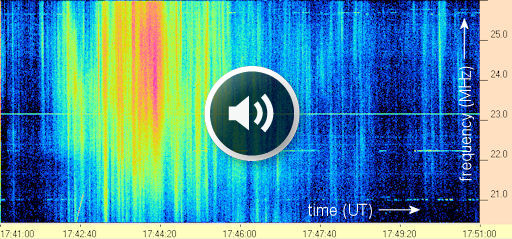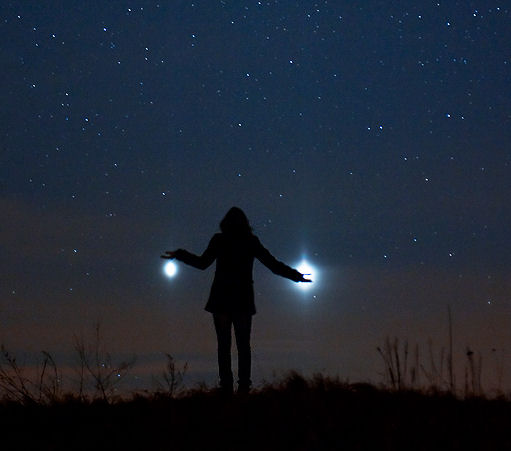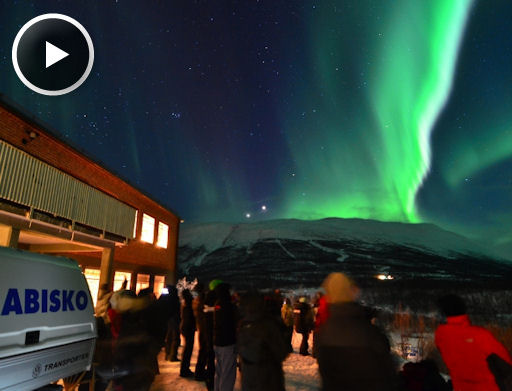GROWING QUIET: The chance of another strong flare is decreasing as big sunspot AR1429 decays and turns away from Earth. Our planet's magnetic field is still reverberating from the impact of a CME on March 12th. High-latitude sky watchers should remain alert for "aftershock auroras" as the storms subside. Aurora alerts: text, phone.
VENUS-JUPITER CONJUNCTION: This is a great week to admire the sunset. Venus and Jupiter are side-by-side only 3o apart in the western sky, beaming through the twilight as soon as the sun goes down. Photographer Marek Nikodem of Szubin, Poland, recorded the scene at nightfall on March 12th:
"Venus and Jupiter are like two lanterns illuminating the darkness," says Nikodem. "It's a wonderful sight."
The two planets are closest together on March 12th and March 13th. Try to catch them before the sky fades completely black. Venus and Jupiter surrounded by twilight blue is a wonderful sight indeed.
more images: from Jimmy Westlake of Stagecoach, Colorado; from Peter Wine of Dayton, Ohio; from Laurent Laveder of Pluguffan, Brittany, France; from Rhiannon Palframan of Cookham Dean, Berkshire, UK; from John Cordiale of Edgecomb Pond, Bolton NY; from Ulf Jonsson of Luleå, Sweden; from Alexander Birkner of Eppelborn, Germany; from Diana Bodea of Ibiza, Spain; from Andrey A. Belkin of Moscow, Russia; from Vesa Vauhkonen of Rautalampi, Finland; from Mitchell Krog of Magaliesburg, South Africa; from Sven
Melchert of Stuttgart, Germany; from Bob Northup of Studio City CA
BROKEN RECORD? The recent sustained activity of sunspot AR1429 has kept the Arctic Circle alight with auroras for almost two weeks. "I have spent many thousands of hours watching and photographing the Northern Lights," says aurora tour guide Chad Blakely of Abisko Sweden, "and I can honestly say that I have never seen the auroras this strong for so many days in a row." In a movie he made last night, March 12th, a green tornado of light swirls across Venus and Jupiter:
"We were all absolutely stunned by the natural beauty of this display," says Blakeley. "I know I sound like a broken record, but sunspot 1429 just will not stop!"
The Antarctic Circle has been similarly active. Click on the links for recent shots of Southern Lights: from Dave Headland of Oamaru, New Zealand; from Ian Stewart of Tinderbox, Tasmania, Australia; from Nick Monk of Mountain River, Tasmania, Australia; from John Golja of Tooradin, Victoria, Australia; from Stephen Voss of Invercargill, New Zealand; from Dave Headland of Oamaru, Southern New Zealand
WEEKEND SOLAR FLARE: Sunspot AR1429 erupted again over the weekend. On Saturday, March 10th, it produced a powerful M8-class flare that almost crossed the threshold into X-territory. During the flare, New Mexico amateur astronomer Thomas Ashcraft recorded a series of radio bursts at 21 and 28 MHz:

Dynamic spectrum courtesy Wes Greenman, Alachua County, Florida
The roaring sounds you just heard are caused by shock waves plowing through the sun's atmosphere in the aftermath of the explosion. "There is incredible complexity in the waveforms," notes Ashcraft. "This is a recording of one of the most turbulent events in all of Nature!

![]()
Solar wind
speed: 564.5 km/sec
density: 0.0 protons/cm3
explanation | more data
Updated: Today at 1645 UT
![]()
X-ray Solar Flares
6-hr max: B8 1002 UT Mar13
24-hr: C4 0040 UT Mar13
explanation | more data
Updated: Today at: 1600 UT
![]()
![]()
![]()
Daily Sun: 13 Mar 12
![]()
![]()
Sunspot 1429 is decaying as it turns away from Earth. The 'spot poses a declining threat for Earth-directed flares. Credit: SDO/HMI
![]()
![]()
![]()
Sunspot number: 89
What is the sunspot number?
Updated 12 Mar 2012
Spotless Days
Current Stretch: 0 days
2012 total: 0 days (0%)
2011 total: 2 days (<1%)
2010 total: 51 days (14%)
2009 total: 260 days (71%)
Since 2004: 821 days
Typical Solar Min: 486 days
Updated 12 Mar 2012
The Radio Sun
10.7 cm flux: 115 sfu
explanation | more data
Updated 12 Mar 2012
![]()
![]()
![]()
Current Auroral Oval:
![]()
Switch to: Europe, USA, New Zealand, Antarctica
Credit: NOAA/POES
![]()
![]()
![]()
Planetary K-index
Now: Kp= 2 quiet
24-hr max: Kp= 4 unsettled
explanation | more data
![]()
Interplanetary Mag. Field
Btotal: 4.6 nT
Bz: 0.0 nT
explanation | more data
Updated: Today at 1648 UT
![]()
![]()
![]()
Coronal Holes: 13 Mar 12
![]()
![]()
A solar wind stream flowing from this coronal hole could reach Earth on March 17-18. Credit: SDO/AIA.






